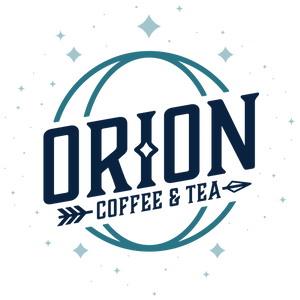
It's a pleasant morning with a cool breeze; you're on vacation in Italy. You decided to beat the crowds by going in late spring rather than summer. Sitting outside a small cafe with a bit of breakfast and the smallest coffee you've ever seen, you take a sip and are greeted by an undeniable potency. Your partner says it's too strong, but there's something about this little drink that intrigues you. There's a creaminess to it, despite that you took your coffee black. Perhaps it's the jolt of flavor? As you go for another taste, the phone rings -- you're at work. You shake your head to clear your thoughts, but know that you will never forget the experience. Perhaps if you could recreate that coffee, you might relive a piece of that time that you were halfway around the world.
So after your responsibilities are completed (or perhaps before), you set about finding a way to make espresso at home, only to find that the equipment required is far out of your budget. The suggested "budget" options are $200, $500, or more! You could try any number of coffee chains, but they just aren't the same. Maybe it's just that coffee at home is more your style anyway.
Luckily, finding an avenue to home-brewed espresso doesn't have to be exorbitantly expensive. Will it cost more than a $20 Mr. Coffee maker? Yes, but you're also after the espresso experience, not just your typical brew. You can't get around needing some kind of espresso maker at home, but if you buy beans from a local coffee shop, almost all of them will grind it for you. While this may not be ideal for long-term freshness, it's a serviceable option until you can get your own grinder.
A fancy multi-thousand-dollar Nuova Simonelli machine might look amazing with its pristine sheen and fancy lights, but most people don't really have the need for something so commercial. There are a plethora of cheaper options depending on your needs. Diving into the world of espresso is something of a journey, so don't expect that everything will be perfect from day one. Your tastes will also evolve over time and you may find yourself experimenting with lighter, complex roasts.
A major mistake that many people make is spending massive amounts of money on an espresso machine but skimping on the grinder. As I mentioned, most coffee roasters will grind to your specification, but as any expert will agree, a consistent, quality grind is more important than a fancy espresso machine. There are cheap grinders available that claim to grind fine enough for espresso, but be sure to read reviews that specifically mention espresso, as the cheaper grinders are inconsistent and cause weak espresso. I personally use a Kalita KKC-25. It's high quality, versatile, and comparably affordable at about $50. Some may find manual grinders to be too much work, but really it only takes a couple minutes; besides, who doesn't need a bit of exercise? One of our employees has found the Breville Smart Grinder Pro to be of excellent quality, but it's four times more expensive at $200.
Probably the cheapest point of entry into espresso is a Moka Pot, though it's more like a second-cousin than actual espresso. This is due to the lower pressure used. There is a common misunderstanding that "espresso" has to do with a type of bean or level of roast -- typically dark. In reality, the name refers to the method of preparation or the name of a drink. Regardless, this is one of the cheapest ways to get extra potent coffee, but you may end up wanting to upgrade down the line, thus spending more money than planned.
Another semi-cheap option is a Nanopresso at $65. While it's meant for camping, I like this device because it takes up no counter space when not being used. One's counter top is ever shrinking, unless the appliances are kept in check. I recommend going for the Nanopresso over the Minipresso because it has the ability to be upgraded for double shots. It's worth noting that the "Barista Kit" is an additional $30. The big advantage here is size and portability. If you start down the path of espresso and decide that it's not worth the effort right now, you can stick it in a drawer and not worry about losing a cubic foot or more to a big machine. Another reason to choose this option, even in addition to owning a machine, is for traveling. If you visit relatives on holidays, take vacations away from home, or go on business trips, you can take the Nanopresso, some ground coffee, and you're all set. All you need is some hot water from any hotel coffee or tea maker.
The downside to the above machines is that they don't froth milk. If being able to make lattes is important to you, it's likely better to get a machine, like something listed below. You can make warm, frothy milk with just a saucepan and French Press, or a dedicated milk frother, but it's important to not end up spending more money on many things in the name of saving money.
Personally, I've had luck with my Hamilton Beach 40792. It's cheaper than Breville's comparable products and it has served me well. It does have some quirks, but for $80-$120, it makes excellent espresso. The biggest oddity is that the pump isn't powerful enough for ultra-fine grounds. With a bit of grind-size tweaking, I have been able to find a grind that works for me and brews at the recommended 25 seconds.
I have known several people who go for various machines from Breville and said that they were quite satisfied. One said that he believes them to be the ideal machine for the money. My biggest hesitation is the cost: they typically run for double, triple, or higher than the price of the Hamilton Beach machine. They tend to be bigger and more powerful, and they also offer some all-in-one options that grind coffee, steam milk, and brew espresso.
There are a bunch of other options that are somewhat like espresso, such as special k-cups, Nespresso, cold brew, and the like, but to achieve true espresso, you'll have to get something that uses an elevated pressure.
Most double shots of espresso go for about $3, plus the time you spend waiting in line. If you get approximately 22, 15 gram double shots out of a $12, 12oz bag of coffee, that's about 55¢ per serving, rather than the above $3. An $80 machine would be paid for, with its coffee after 33 servings, which is less than 3 months if you drink espresso just 3 times per week. Throw in a $50 grinder and that's still less than five months! Even if you were to spring for equipment that's twice the price, a year would see you saving money.
With a manual grinder and a cheap machine, you can get started for less than $150 (or $90 if you get your espresso pre-ground) If you want to go to the next level and have $500 to burn, check out Breville's options. Whether you decide to make do with minimal equipment or make a full-blown latte bar with syrups, a knockbox, etc., making espresso at home is a rewarding and cost-saving experience. Hopefully you now have a path into the art that won't break the bank.




